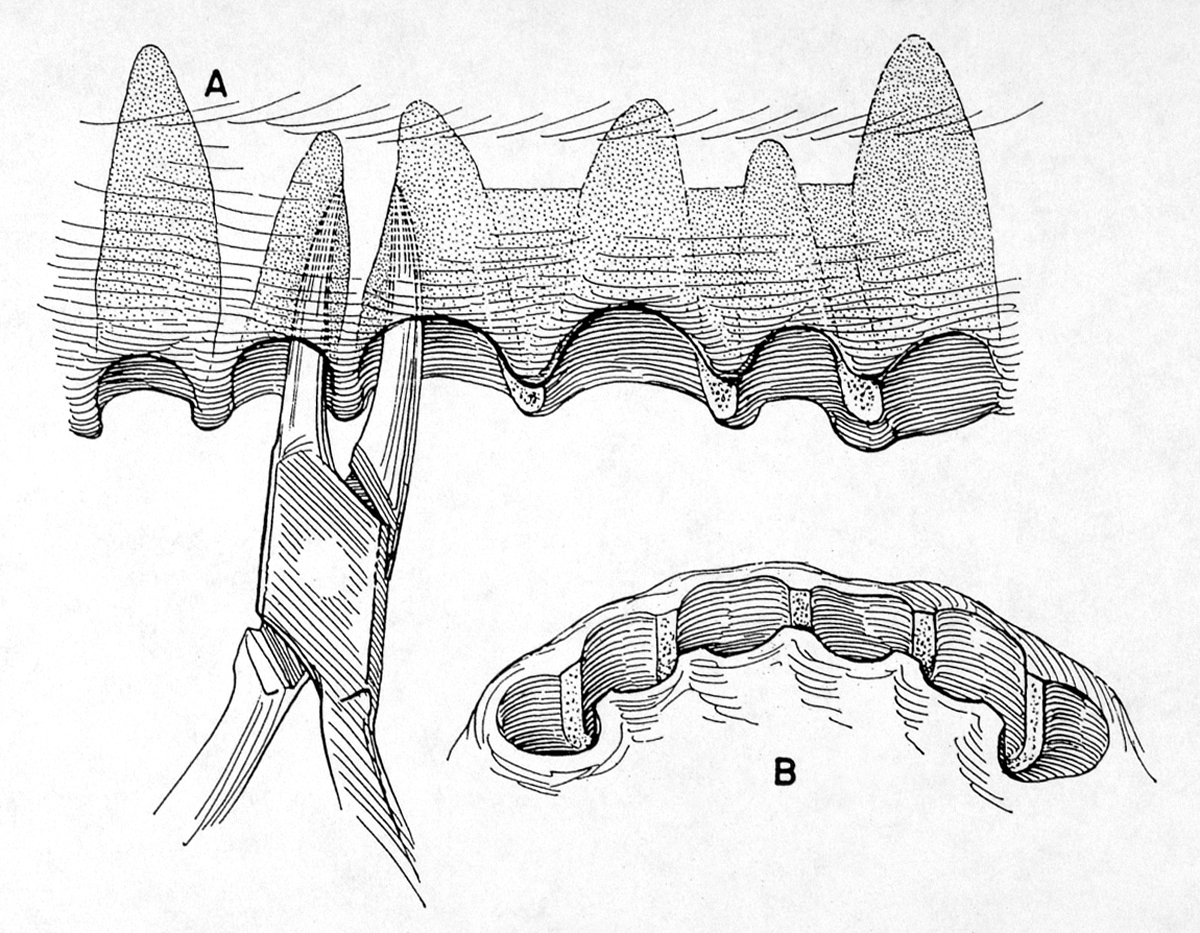Preprosthetic surgery
Atraumatic exodontia & intraradicular radiculectomy and crush
Atraumatic tooth extraction techniques aim to minimise trauma to the bone structure and surrounding tissue and to preserve the socket. Conventional extraction of a tooth with forceps causes damage to the socket walls by an increasingly loosening motion imposed on the tooth from its surrounding, until it becomes loose enough for the tooth to be pulled out, and the ligament that attached the tooth to its socket snaps. Atraumatic tooth extractions instead avoid such enforced sideway motions by employing elevators and by eventually cutting the ligament.
Intraradicular radiculectomy is a technique that reduces the socket dead space following multiple extractions, usually in the upper and lower labial segments. Following extraction, the bony septa between the sockets are removed by means of rongeurs (Figure 1 and Figure 2).


The buccal plate is then compressed manually and in-fractured to reduce the socket space. The approximation of buccal and lingual / palatal plates of the socket allows the gingival (gum) margins to be sutured to maintain the compression. This technique is of particular benefit for the insertion of immediate dentures.
Surgery for conventional prosthodontics
Surgery for conventional prosthodontics addresses needs for fixed and removable prosthesis.
Non-implant fixed prostheses are predominately confined to crown and bridgework. Surgery for these prostheses is invariably confined to periapical surgery or periodontal procedures.
Surgery for removable prostheses can be considered under soft tissue and hard tissue surgery. In either case, surgery is aimed at improving retention and stability of the prosthesis, improving comfort, or the removal of pathological tissue. It should be considered best practice for this kind of work to be carried out in close collaboration between the surgeon and the prosthetist.
Soft tissue surgery
Common soft tissue procedures relevant in the context of pre-prosthetic surgery include:
- frenectomy (removal of a small fold of soft tissue to relieve tightness);
- ridge reduction (removal of excess soft ridge tissue resulting from advanced periodontal disease);
- removal of irritation (‘denture’) hyperplasia (enlarged tissue);
- vestibuloplasty (improving the ridge height or sulcus depth).